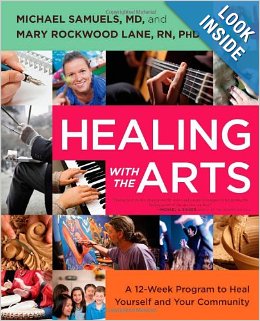Drawing out the Inner Artist: Seven Tips for Engaging People who have Dementia
“Every child is an artist. The problem is how to remain an artist once he grows up.” ― Pablo Picasso
Sharing the arts is one of our passions. We so appreciate the insightful work of Michael Samuels, M.D., co-founder and director, Arts as a Healing Force. These are his words, which originally appeared in the Huffington Post:
Anyone can use the healing power of art to reach a loved one living with Alzheimer’s disease. All it takes is an ordinary person who loves and cares for another. A recent article in the Boston Globe says, “Making music, painting or dancing — and seeing or hearing it — may be the most effective treatment for dementia to date.”
There has been new exciting research about art and Alzheimer’s that sheds light on this remarkable way of healing. Music and art stimulate areas of the brain not affected by Alzheimer’s and accesses memories through routes that avoid affected language centers. Art actually helps the brain navigate new neurological communication pathways. Even if the Alzheimer’s patient is unresponsive and can’t remember where they are, a song can stimulate the sweet memories of youth that lay long buried.
Any art that the Alzheimer’s patient enjoys will open a huge new way of healing — for yourself and for the one you love.
TIPS:
You can do it. Professional training is not necessary; anyone can be an artist/healer for a person living with Alzheimer’s.
Keep it simple. Music is the easiest and most researched way to reach a person with Alzheimer’s but you also can use painting, sculpting and poetry. Gear your art to the person’s skill level at the moment.
Go into the past to heal the present. Art evokes memories. Any art that brings up a memory is powerful. A song from a past event evokes the memory of a first kiss. A painting or photograph of the family home can help evoke childhood memories.
Make it stimulating. Choose bright colors, collage from old photograph albums, lively music, dances.
Make art in a sacred space. Make the place as wonderful and beautiful as you can. Play soft music in the background — make the lighting bright enough to see easily, add scents from aroma therapy and even make a small altar with loved objects from the past.
Support with loving kindness and compassion. Make all your comments nonjudgmental and loving. Art and healing is about process, not the product. It’s all about love and relationship.
Ask them to tell you the story about the artwork. If your loved one can still speak ask them to share the memories that come with the art, music or words.
According to the Alzheimer’s Association, music and art can enrich the lives of people with Alzheimer’s disease by allowing for self-expression and engagement even after dementia has progressed. Many organizations are using the power of art to help those living with Alzheimer’s. The Assisted Living Federation of America (ALFA) has an annual art contest at senior centers to encourage elderly people to stimulate their brains by making art. The I’m Still Here Foundation started Artists for Alzheimer’s initiative (ARTZ) that helps more than 10,000 Alzheimer’s and dementia patients attend arts events. This greatly enhances the lives of Alzheimer’s patients and reduces their symptoms.
Michael Samuels, M.D., Co-founder and director, Arts as a Healing Force
MICHAEL SAMUELS M.D. is a physician, artist, guided imagery specialist, and one of the foremost experts in body, mind, and spirit medicine today. He is the co-founder and director of Arts as a Healing Force. Samuels teaches at San Francisco State University’s Institute of Holistic Studies and is the author of 22 books, including the bestsellers The Well Body Book, Seeing with the Mind’s Eye, and the Well Baby Book. His latest book is HEALING WITH THE ARTS: A 12-Week Program to Heal Yourself and Your Community, co-authored by Mary Rockwood Lane, R.N., Ph.D.

Does writing count?
Beth, you asked about writing. Writing definitely counts!!
Don’t you agree?
Forty years ago I sang with a group that visited nursing homes. We saw their whole countenance change from blank stares to engagement as we sang old hymns they had been familiar with in their youth.